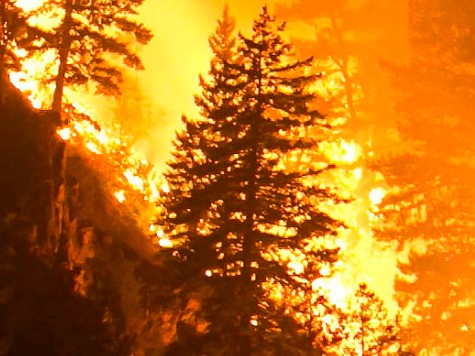
One of the critical policies of the highly successful school choice movement in America is the creation of charter schools, which are publicly financed but privately run. Dr. Robert H. Nelson, a senior fellow with The Independent Institute in Oakland, California suggests a similar system could also work to improve forest management.
Nelson wrote in the Fresno Bee, “With the number and severity of wildfires increasing dramatically, it’s time to rethink management policies for our national forest system.”
Although many blame climate change, according to Nelson, the “greatest blame for faulty fire management practices lies squarely with the U.S. Forest Service.”
Wildfires have plagued California with increasing regularity over the years, most recently the massive inferno around Yosemite National Park, and many target the policies of the Forest Service. The Forest Service has allowed an unusually high amount of dry underbrush to build up in western forests, essentially creating massive tinderboxes. Traditionally, this was prevented by the use of controlled burns, a practice that was even used by American Indians, and other forest management methods.
Nelson wrote in the Wall Street Journal that, “Wildfires destroyed an estimated 6,500 square miles of U.S. forest lands in 2013, an area larger than the state of Connecticut.” Large wildfires in the West, where the government controls most of the land, have become an epidemic.
“The total forest acres burned in 11 western states set new records successively in 1988, 1996, 2000, 2006, 2007 and 2012,” he wrote.
Even the Forest Service has admitted to bureaucratic incompetence, saying in a 2002 report that it was “within a statutory, regulatory and administrative framework that has kept the agency from effectively addressing rapid declines in forest health.”
Congress attempted to address this problem in 2009, creating the Federal Land Assistance, Management and Enhancement Act (FLAME), but this report was only finished on April 9, 2014.
Nelson wrote:
Rather than trying to comprehensively fix all of the problems plaguing the Forest Service, whose 35,000 employees manage approximately 10 percent of all land in the United States, what’s needed is a new management model – the type public education reformers have been experimenting with. Like charter schools, we need “charter forests.”
Using a system that is similar to the successful, and now nearly bipartisan, charter schools, forest management can be conducted by private companies on the local level. The key, according to Nelson, is “local management autonomy.” This would allow innovation and a sidestepping of the bureaucratic nightmare that the Forest Service and other government agencies have created.
Though management would be left out of the hands of the federal government, there would still be public oversight of the organizations involved such as a local board of directors and local government officials. However, there would still be much room to innovate and bypass “civil service procedures.”
Nelson wrote that charter forests would be, “exempt from current requirements for public land use planning and the writing of environmental impact statements,” which are outdated and have placed too much power in the hands of “litigants and federal judges.”
“It’s time to give a new management model a try. If not, we may find the destructive pattern of the past 30 years continue for another 30,” Nelson wrote.

COMMENTS
Please let us know if you're having issues with commenting.